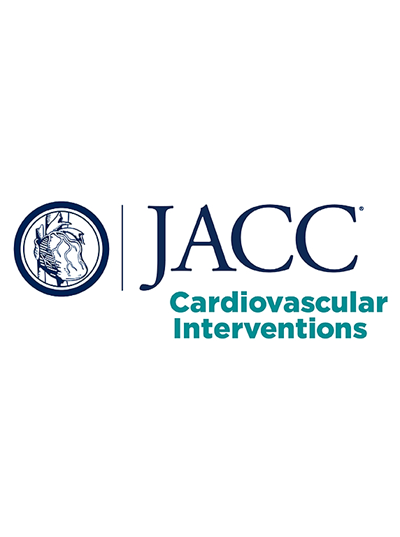Effect of Sodium-Glucose Cotransporter-2 Inhibitors on the Progression of Aortic Stenosis
IF 11.7
1区 医学
Q1 CARDIAC & CARDIOVASCULAR SYSTEMS
引用次数: 0
Abstract
Background
Aortic stenosis (AS) is the leading cause of valvular heart disease-related morbidity and mortality, but there are no medical treatments to slow its progression. Sodium-glucose cotransporter-2 inhibitors (SGLT2i) have pleiotropic effects which could be disease modifying in AS.
Objectives
The purpose of this study was to determine if SGLT2i usage is associated with slower progression of AS.
Methods
A target trial emulation comparing the effect of the initiation of SGLT2i compared with no SGLT2i in patients with nonsevere AS was performed using retrospective electronic medical record data from the Yale New Haven Health System from January 2016 to September 2022. Patients with native aortic valve sclerosis or nonsevere AS with at least 12 months of echocardiographic follow-up were included. Patients were excluded if they had an estimated glomerular filtration rate <30 mL/min/1.73 m2 or had initiated SGLT2i >1 year before the index echocardiogram. The prespecified primary outcome was progression to severe AS.
Results
A total of 458 patients prescribed SGLT2i and 11,240 patients never prescribed SGLT2i were included. Patients were on SGLT2i for a median of 0.9 years. Patients on SGLT2i were younger and had higher rates of diabetes and chronic kidney disease. Patients on SGLT2i were more likely to have ejection fraction ≤40%. There were no differences between groups in baseline AS severity (66% sclerosis, 23% mild stenosis, and 11% moderate in overall cohort). Patients ever prescribed SGLT2i were less likely to progress to severe AS (HR: 0.61; 95% CI: 0.39-0.94; P = 0.03) with a progressively lower risk among patients on SGLT2i for >3, 6, and 12 months (HR: 0.54, 0.48, and 0.27, respectively).
Conclusions
This retrospective, multicenter, observational study suggests that SGLT2i may slow the progression of nonsevere AS.
钠-葡萄糖共转运蛋白-2抑制剂对主动脉狭窄进展的影响。
背景:主动脉瓣狭窄(Aortic stenosis, AS)是瓣膜性心脏病相关发病和死亡的主要原因,但目前尚无药物治疗来减缓其进展。钠-葡萄糖共转运蛋白-2抑制剂(SGLT2i)具有多效性,可能是AS的疾病改善。目的:确定SGLT2i的使用是否与AS进展缓慢有关。方法:利用耶鲁大学纽黑文卫生系统2016年1月至2022年9月的回顾性电子病历数据,对非重度AS患者启动SGLT2i与未启动SGLT2i的效果进行了目标试验模拟。有先天性主动脉瓣硬化或非严重AS的患者接受了至少12个月的超声心动图随访。如果患者在超声心动图检查前1年有肾小球滤过率2或SGLT2i bbb10,则排除。预先指定的主要结局是进展为严重AS。结果:纳入458例服用SGLT2i的患者和11240例未服用SGLT2i的患者。患者接受SGLT2i治疗的中位时间为0.9年。服用SGLT2i的患者更年轻,糖尿病和慢性肾脏疾病的发病率更高。SGLT2i患者射血分数≤40%的可能性更大。基线AS严重程度组间无差异(整个队列中66%为硬化症,23%为轻度狭窄,11%为中度)。接受SGLT2i治疗的患者进展为严重AS的可能性较小(HR: 0.61;95% ci: 0.39-0.94;P = 0.03),服用SGLT2i的患者在第3、6和12个月的风险逐渐降低(HR分别为0.54、0.48和0.27)。结论:这项回顾性、多中心、观察性研究表明,SGLT2i可能减缓非严重AS的进展。
本文章由计算机程序翻译,如有差异,请以英文原文为准。
求助全文
约1分钟内获得全文
求助全文
来源期刊

JACC. Cardiovascular interventions
CARDIAC & CARDIOVASCULAR SYSTEMS-
CiteScore
11.60
自引率
8.80%
发文量
756
审稿时长
4-8 weeks
期刊介绍:
JACC: Cardiovascular Interventions is a specialist journal launched by the Journal of the American College of Cardiology (JACC). It covers the entire field of interventional cardiovascular medicine, including cardiac, peripheral, and cerebrovascular interventions. The journal publishes studies that will impact the practice of interventional cardiovascular medicine, including clinical trials, experimental studies, and in-depth discussions by respected experts. To enhance visual understanding, the journal is published both in print and electronically, utilizing the latest technologies.
 求助内容:
求助内容: 应助结果提醒方式:
应助结果提醒方式:


